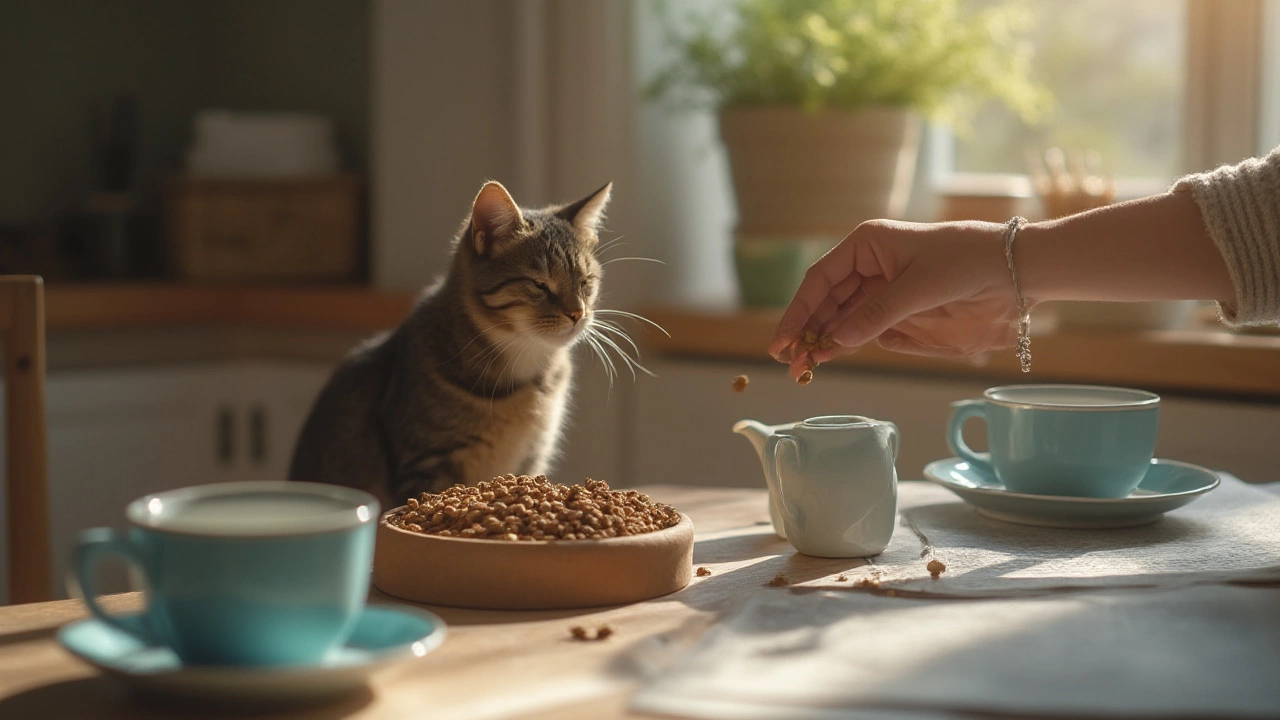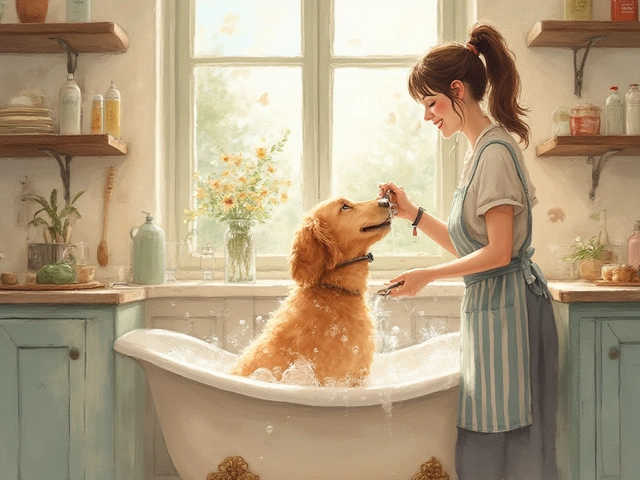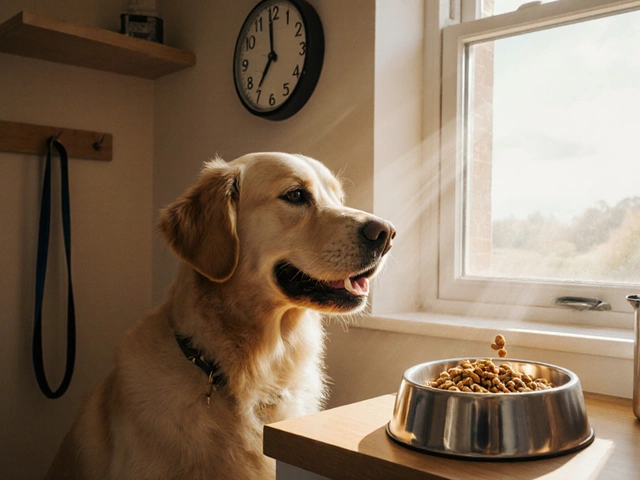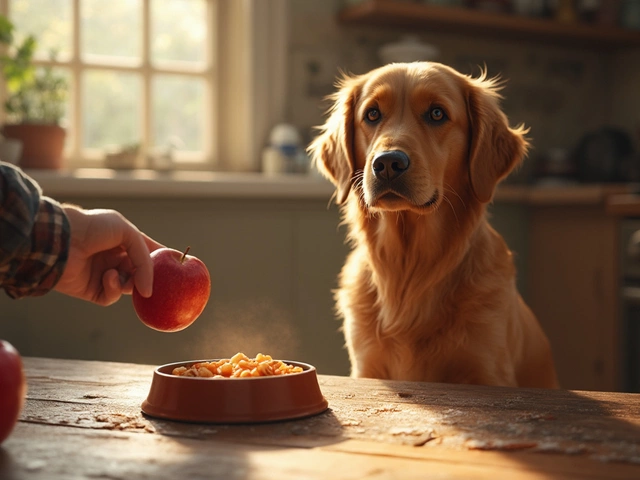You might assume your cat is a tiny food expert who always knows when to put the fork down (okay, paw down) and walk away from the bowl. Funny thing is, that’s not always how it works. I’ve seen pet owners—myself included—stare at their cats and wonder: Will a cat actually stop eating when it’s full, or will it keep munching just because the food’s there? Sure, cats aren’t Labrador retrievers, but they’re not little food robots either. Let’s see what science and real-world experience says about how and why cats sometimes eat more (or less) than they should.
The Science Behind Cat Appetite: Instinct or Intelligence?
First off, cats are what scientists love to call 'obligate carnivores.' That means they need animal-based proteins to thrive. In the wild, they hunt, catch, eat, and then lounge in the sun for hours before thinking about food again. Most wild cats eat small, frequent meals—and the amount is dictated by how much energy they used to catch lunch. But indoor cats, with their plush lives and food bowls always full, aren’t exactly burning calories chasing mice under the sofa. Their instincts don’t always fit the modern lifestyle.
Here’s an interesting tidbit: studies done by veterinary nutritionists have shown cats do have a built-in ability to regulate calories—up to a point. Give a healthy cat free access to a properly balanced dry food, and most will self-regulate. But that’s only half the story. Put a stressed, bored, or lonely cat in a home with bottomless kibble? Things can go wonky fast.
Not all cats have the same willpower, either. Some breeds—like Maine Coons and Bengals—have been shown to eat more if food is freely available. Age and background matter, too. A young, active cat tends to stop eating when full far more reliably than a senior with mobility issues or a rescue cat that once nearly starved. There are even some famous 'garbage disposal' cats who eat until there’s nothing left, no matter how much they’re served. Sounds odd, but it’s well-documented.
The kibble itself plays a role as well. High-protein foods tend to help cats feel satisfied quicker, while cheaper, carb-heavy kibbles—think corn or wheat as top ingredients—don’t trigger the same fullness signal in the brain. That’s why you’ll sometimes see a cat keep eating like a little fur-covered vacuum, especially if the food isn’t very nutrient-dense.
All this adds up to one truth: Cats aren’t always as self-regulating as we’d hope. Many will walk away when they’re full—but many others, given the wrong circumstances, absolutely won’t.
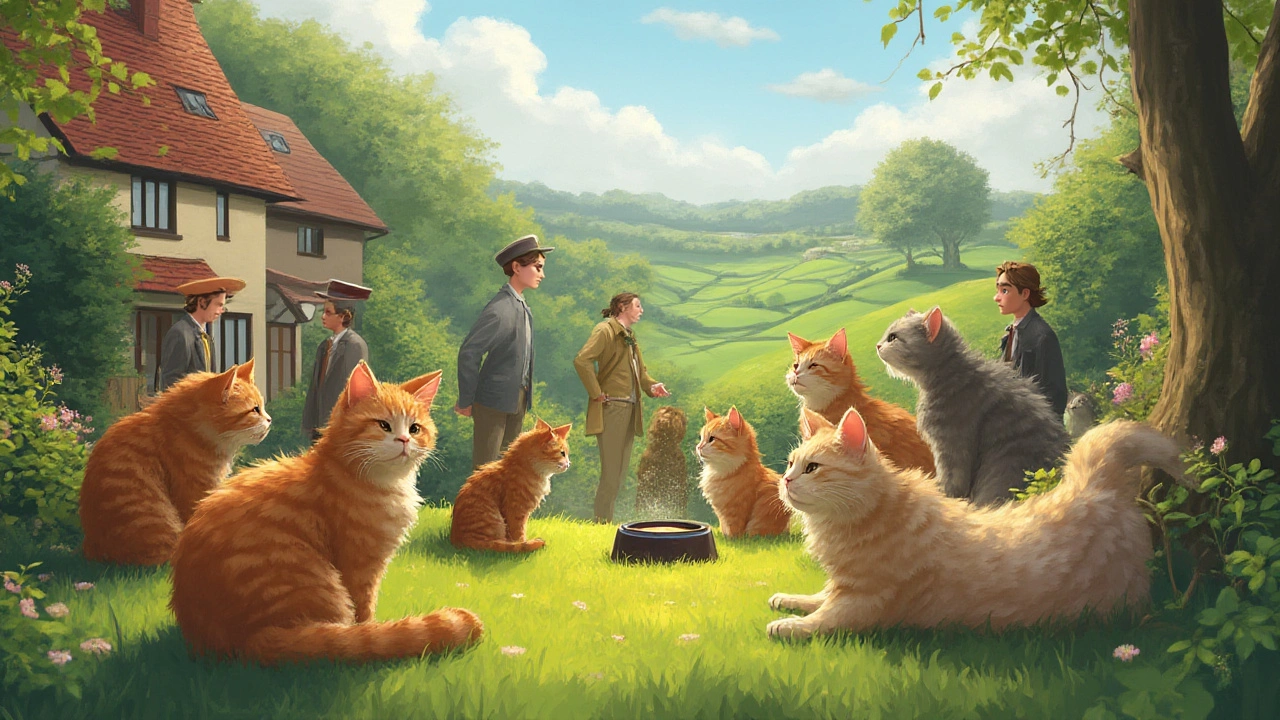
Why Some Cats Overeat: The Unexpected Triggers
If you’re picturing a cat mindlessly devouring food, there’s usually more going on than just hunger. Let’s talk stress. Cats are creatures of habit—move the sofa, introduce a new pet, or switch up feeding times, and some cats eat for comfort. I remember when my wife, Kendra, and I moved apartments. Our tabby, Noodle, turned suddenly obsessed with the food bowl. All those boxes and strangers disrupted her world, and kibble became her stress ball.
Then there’s boredom. House cats, especially those left alone for long stretches, may nibble away at their food just because there’s nothing else to do. It sounds silly, but the same neural pathways lit up in humans when we snack out of boredom light up in cats, too.
Certain medical issues—like diabetes, hyperthyroidism, or parasites—can also jack up a cat’s appetite. One of my vet friends swears the first sign of hyperthyroidism she catches in her patients isn’t wild-eyed energy, but weight loss paired with a never-ending hunger. Not every overeating cat is sick, but it’s something to keep in mind if your feline’s appetite suddenly goes from drifting to devouring.
Some cats grew up hungry. Rescue cats, strays, and cats from multi-animal shelters often act like every meal is their last. It’s a survival mechanism. Even after months (or years) of regular feedings, old habits die hard. If you’ve adopted a cat with a rough past and notice ravenous eating, know that patience and routine usually help over time.
Another factor: human behavior. You know those treats you slip your cat under the kitchen table? Or the extra scoop because she 'looked hungry'? Turns out, cats become skilled manipulators if attention and affection are handed out with food. Before long, you’re reinforcing eating for the wrong reasons—and that’s a fast track to a chunky kitty. Ask any vet about the rise in cat obesity, and you’ll get a knowing sigh.
The setup of the food bowl matters, too. Leaving a pile of food out all day (the 'buffet method') encourages snacking and overeating in cats prone to boredom or anxiety. Timed meals with measured portions work a lot better, especially for cats who don’t seem to know when enough is enough.
Bottom line: if your cat seems to inhale food past the point of fullness, there’s almost always an external trigger—psychological, medical, or learned behavior at work. Figuring out which is the game-changer.
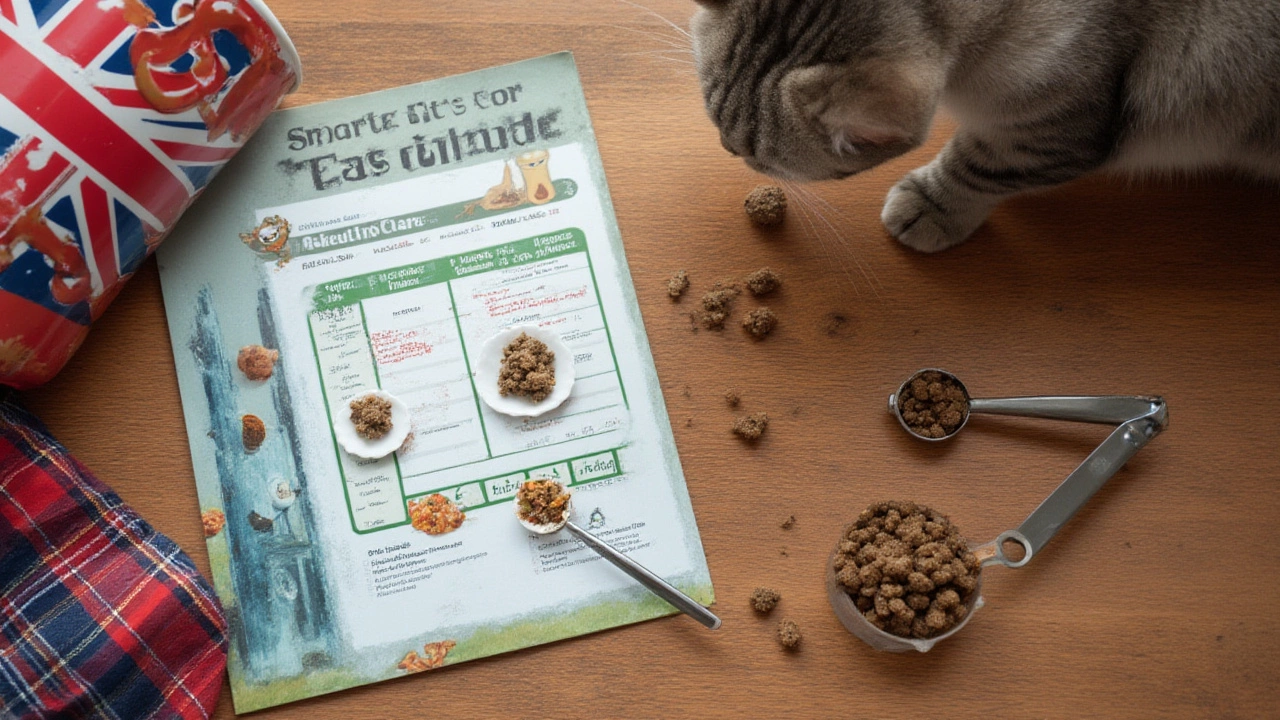
Smart Feeding: Tips to Prevent Cat Overeating
So how do you keep your cat from eating its way into a food coma? Portion control is the best weapon. Check your cat food label for daily serving size, but remember: those instructions are a starting point, not gospel. Adjust for your cat’s age, size, activity level, and whether it’s an indoor lounger or a backyard prowler. Break meals into two or three feedings per day instead of free-feeding all the time. Not only does this help manage portions, but it also gives your cat something to look forward to—and many cats love routine almost as much as food.
If your cat is one of those 'vacuum cleaners,' try puzzle feeders or slow-feed bowls. These nifty tools trick cats into working for their food, slowing them down, and making meals last longer. Plus, it brings out their natural hunting instincts, so they’re less likely to eat out of boredom or stress. Some models are as basic as a ball with holes, while others are complex mazes. The right one depends on your cat’s patience (and smarts).
Don’t forget about food ingredients. High protein, high moisture foods—like canned or raw diets—tend to fill cats up faster than dry kibble. If your veterinarian approves, swapping some dry food for wet can make a difference. Cats on canned food also take in more water, which helps prevent urinary issues, especially in males.
Get in the habit of watching your cat’s body, not just the bowl. If you run your hands along her back and can’t feel ribs (or you feel an extra layer of jiggle), it’s time to drop calorie intake. Checking monthly helps you spot subtle weight creep. Your vet can show you how to use a 'body condition score' chart—the gold standard for tracking feline fitness.
Don’t be afraid to change things up if your cat’s weight is creeping up or down. Sometimes, rotating between food types or schedules helps keep things interesting and healthy. Just avoid abrupt changes, or you’ll risk tummy upsets—and nobody wants to clean cat barf at 2 a.m.
- Stick to meal times: Set a timer or a reminder on your phone.
- Measure food: Use a kitchen scale for accuracy. Guessing by eye usually means overfeeding.
- Limit treats: Treats should be less than 10% of daily calories. Pick high-protein, low-carb snacks if you can.
- Add enrichment: Toys, window perches, or even teaching your cat to chase a feather wand can replace stress-eating and curb boredom.
- Monitor weight together: If you live with someone, take turns feeding so portion sizes stay on track. Kendra’s always the food cop at our place.
Watch for warning signs, too. If your cat suddenly loses or gains a lot of weight, skips meals, or acts ravenously hungry all the time, call your vet. Sudden shifts in appetite can be early signals of bigger problems.
At the end of the day, most healthy cats will do a pretty good job of eating what they need and stopping when they’re satisfied. But stress, boredom, certain medical issues, and yes—our own human habits—can trip up even the best feline self-control. Understand what motivates your cat, set up a smart feeding environment, and keep portions sane. That’s how you beat the buffet effect—and keep your feline happy and healthy for years.

